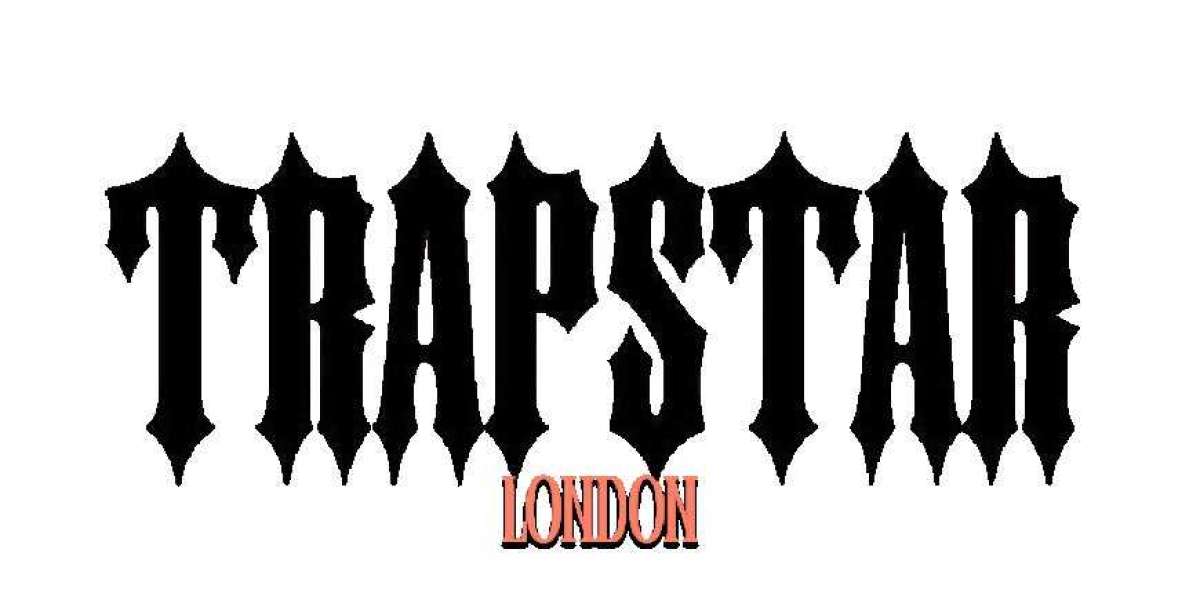In the vast and ever-evolving world of streetwear, few brands have managed to capture the raw essence of urban culture while maintaining a strong sense of identity and authenticity. Trapstar London is one such brand. Founded in the early 2000s, Trapstar has grown from a grassroots label rooted deeply in the streets of London to an internationally recognized name synonymous with rebellious style, music, and youth culture.
Origins and Early Beginnings
Trapstar London was established in 2005 by Lee John and Will Rafey, two friends from West London who shared a passion for fashion, music, and art. Their vision was to create a brand that represented the spirit of London’s urban youth — a brand that could serve as a voice for the subcultures thriving in the city’s diverse neighborhoods. The name "Trapstar" itself is reflective of the brand’s ethos: combining the grit and hustle associated with ‘trap’ culture with the idea of being a ‘star’ in one’s own right.
The brand started off modestly, with Lee and Will producing limited runs of graphic tees, hoodies, and hats featuring bold, provocative designs. Their early work was influenced by the grime scene — a genre of music born in East London, characterized by its fast beats and raw lyrical content — and other underground movements. Trapstar’s designs encapsulated the defiant attitude and streetwise aesthetics that resonated with London’s youth, particularly those from working-class backgrounds.
The Visual Identity
One of Trapstar’s defining features is its strong visual identity. The brand’s logo — a simple yet striking black-and-white graphic featuring a star — quickly became an icon in the streetwear community. The use of bold typography, graphic motifs, and a monochrome palette allowed Trapstar London to create a cohesive look that was instantly recognizable.
Trapstar’s design approach is often minimalistic but impactful. The brand frequently incorporates elements such as stars, skulls, and cryptic slogans into its garments, blending punk and street culture influences. This visual language is not just about aesthetics; it’s a statement. Trapstar pieces often carry a subversive undertone, reflecting the struggles and defiance of urban youth.
Cultural Significance and Influence
Trapstar London is more than just a clothing brand; it’s a cultural movement. It captures the voice of a generation that has long been marginalized and misunderstood. Through its designs, collaborations, and presence in the music scene, Trapstar has become a platform for self-expression and resistance.
The brand has strong ties to the UK grime and hip-hop scenes, often collaborating with prominent artists and musicians. This connection helps Trapstar maintain its authenticity and relevance, grounding it firmly in the culture it represents. Artists like Skepta, Giggs, and Stormzy have been spotted wearing Trapstar, further cementing the brand’s place in the contemporary urban landscape.
Moreover, Trapstar’s rise coincided with a growing global interest in British street culture. While American brands dominated the streetwear market for years, Trapstar brought a distinctly London flavor to the scene — gritty, raw, and unapologetically real. This unique perspective helped diversify the streetwear landscape, introducing international audiences to the sounds, styles, and stories of London’s streets.
Expansion and Mainstream Success
What started as a niche brand quickly gained traction. By the early 2010s, Trapstar had expanded its reach beyond London, attracting attention from streetwear enthusiasts worldwide. The brand’s ability to stay true to its roots while evolving with the times was key to its success.
Trapstar’s collections began to include a wider range of apparel and accessories, from jackets and denim to caps and bags. The quality and craftsmanship of their products improved significantly, appealing to both hardcore fans and fashion-conscious consumers.
A significant milestone in Trapstar’s journey was their collaboration with major global brands and high-profile artists. Collaborations helped elevate Trapstar’s profile and allowed the brand to experiment creatively. One notable collaboration was with Nike, where Trapstar’s signature style was merged with Nike’s iconic sneaker designs, resulting in highly sought-after limited editions.
The Trapstar Community
At its core, Trapstar Joggers is a community-driven brand. The founders have always emphasized the importance of maintaining a close relationship with their audience. This connection is evident in how the brand communicates and markets itself — through social media, pop-up shops, and events that bring fans together.
Trapstar’s customer base is loyal and diverse, united by a shared appreciation for authenticity and creativity. For many fans, wearing Trapstar is a way to express identity and belonging, a symbol of pride in where they come from and the culture they represent.
The brand also supports various artists and creatives from London, offering a platform for emerging talent. Through partnerships, events, and collaborations, Trapstar fosters a sense of solidarity within the urban creative community.
Challenges and Criticism
Despite its success, Trapstar London has not been without challenges. As the brand grew, some longtime supporters worried about potential commercialization and loss of the original underground spirit. This tension is common in streetwear, where authenticity is paramount and mainstream success can sometimes alienate core fans.
However, Trapstar has largely managed to balance growth with authenticity. The founders remain deeply involved in the brand’s direction, ensuring that it stays connected to its roots. This commitment has helped Trapstar navigate the complexities of scaling up while preserving its cultural significance.
The Future of Trapstar London
Looking ahead, Trapstar London shows no signs of slowing down. The brand continues to innovate, exploring new creative avenues and expanding its product offerings. It remains a beacon of London’s street culture, inspiring a new generation of creatives and fashion enthusiasts.
With a strong foundation built on community, music, and authentic storytelling, Trapstar is well-positioned to remain a major player in global streetwear. Its ability to adapt to changing trends while staying true to its core values will be crucial as the fashion industry evolves.
Conclusion
Trapstar London is more than just a fashion label — it is a cultural phenomenon that embodies the spirit of London’s streets. From its humble beginnings as a small, grassroots brand to its status as an internationally recognized name, Trapstar has consistently represented the grit, creativity, and resilience of urban youth.
By blending fashion with music, art, and community, Trapstar has carved out a unique space in the streetwear world. Its influence extends beyond clothing, serving as a platform for voices often unheard and stories often untold.
In a world where authenticity is rare and fleeting, Trapstar London stands as a testament to the power of staying true to your roots. It is a brand built by the streets, for the streets, and its legacy continues to inspire and challenge the norms of fashion and culture alike.














